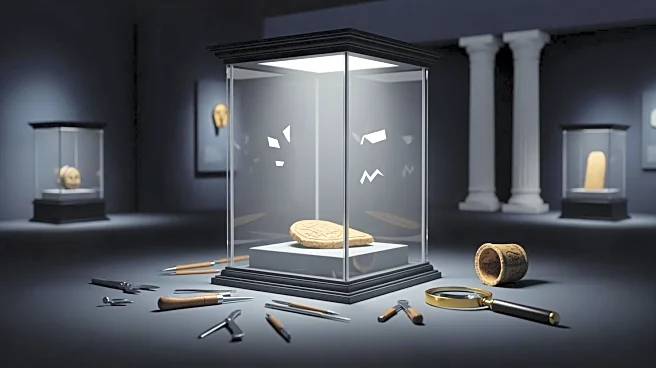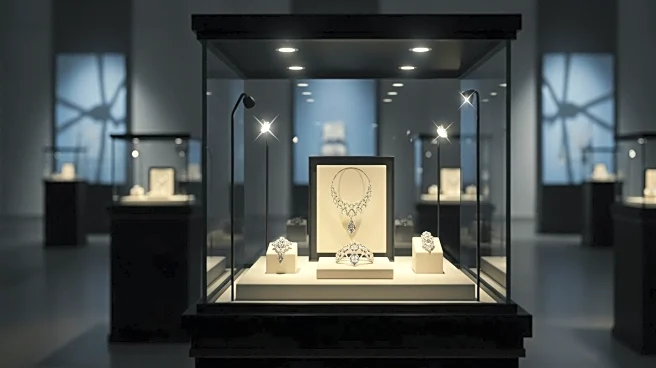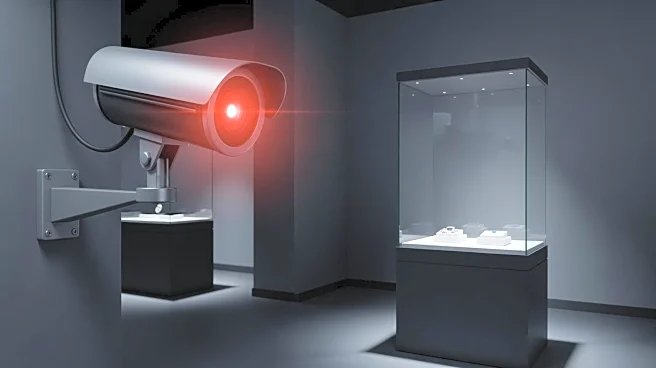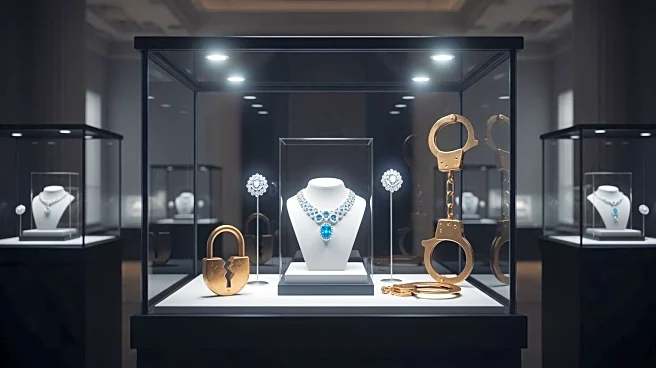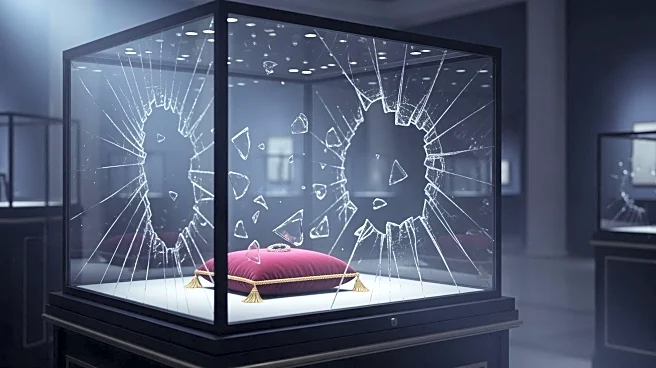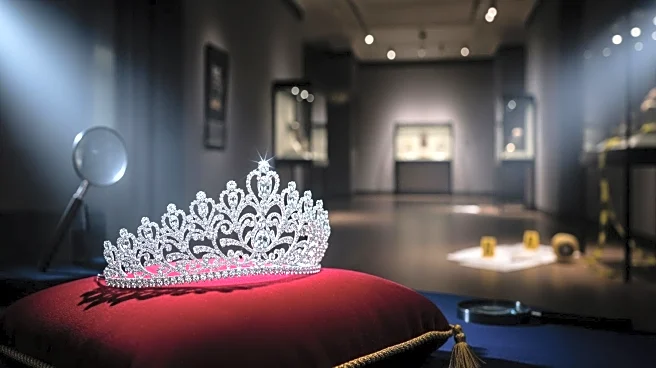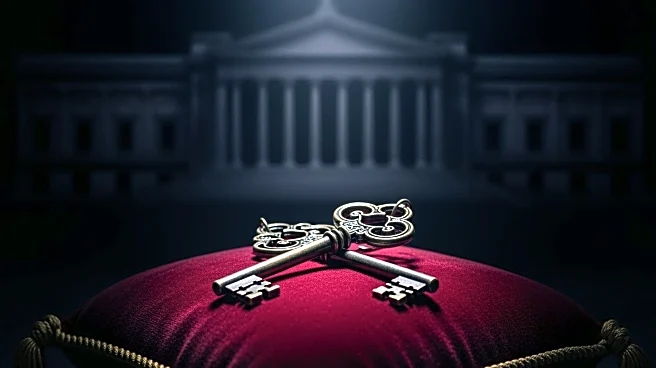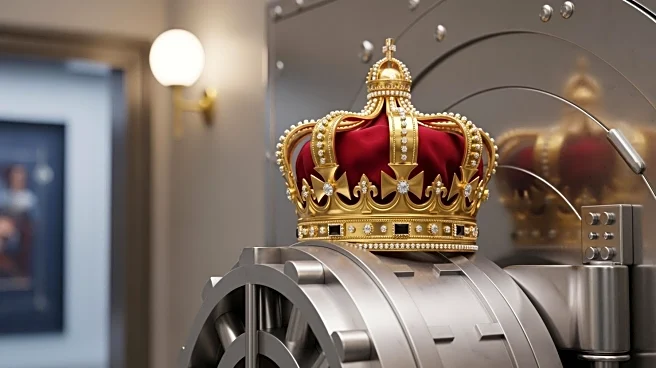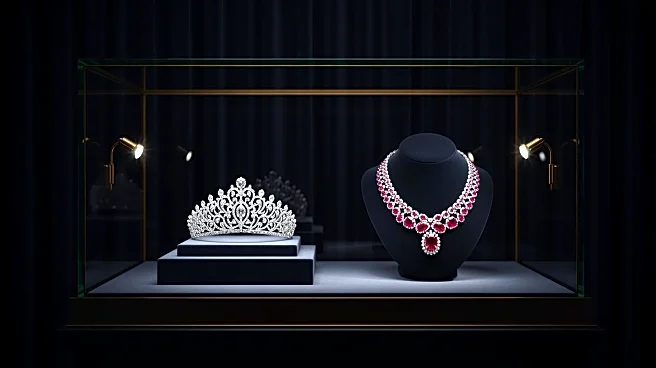What's Happening?
Two suspects have been arrested in connection with the theft of crown jewels from the Louvre Museum in Paris, according to the Paris prosecutor. The arrests were made a week after the heist, which saw
thieves steal jewels valued at over $100 million in less than eight minutes. The suspects were apprehended by a special police unit focused on armed robberies and art thefts. One of the suspects was reportedly preparing to leave the country from Paris Charles de Gaulle Airport. The museum's director described the incident as a 'terrible failure,' and the theft has been compared to the cultural impact of the Notre Dame Cathedral fire in 2019. The stolen items include a sapphire diadem, an emerald necklace, and a diamond diadem, among others. One piece, an emerald-set imperial crown, was found damaged but repairable outside the museum.
Why It's Important?
The arrest of the suspects is a significant development in one of the most high-profile museum thefts of the century. The theft of such culturally significant items has not only shocked the art world but also raised concerns about security measures in place at major cultural institutions. The recovery of these items is crucial for preserving France's cultural heritage. The incident has prompted discussions on improving security protocols to prevent similar occurrences in the future. The theft also highlights the ongoing challenges faced by museums in protecting valuable artifacts from sophisticated criminal operations.
What's Next?
The investigation is ongoing, with more than 100 investigators working to recover the stolen jewels and apprehend all involved perpetrators. Further details are expected to be released following the suspects' custody period. The focus will likely remain on recovering the stolen items and understanding how the theft was executed despite the museum's security measures. The incident may lead to increased scrutiny and potential reforms in museum security practices globally.
Beyond the Headlines
The theft underscores the vulnerability of cultural institutions to well-planned criminal activities. It raises ethical questions about the responsibility of museums to safeguard national treasures and the potential consequences of failing to do so. The incident may also influence public perception of museum security and trust in these institutions to protect cultural heritage.
